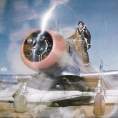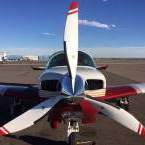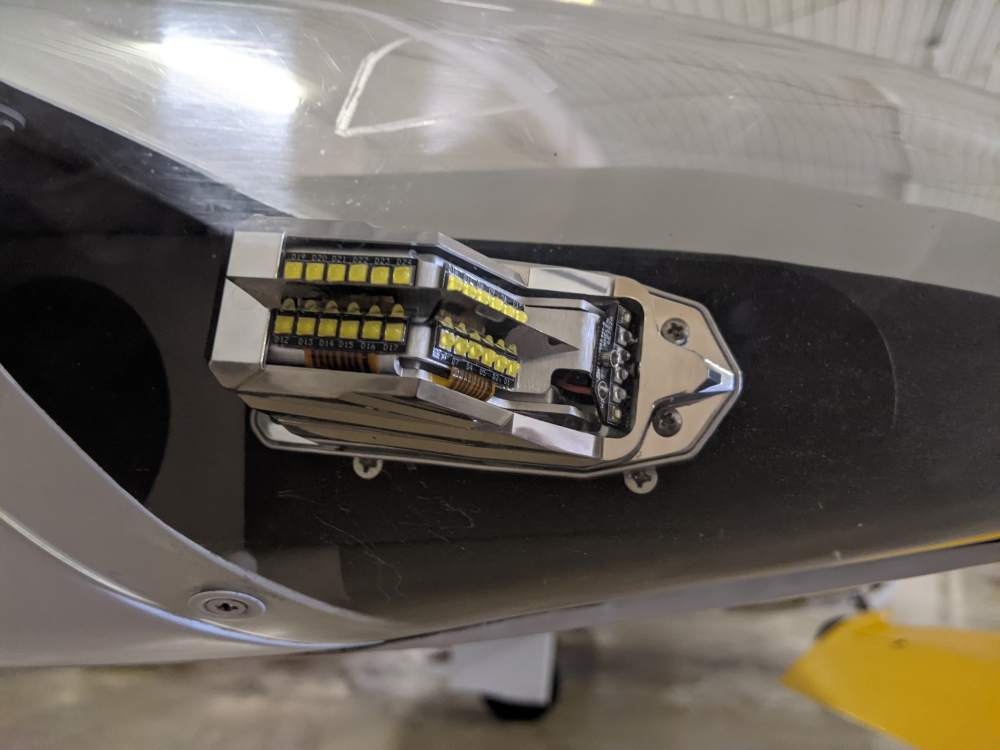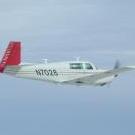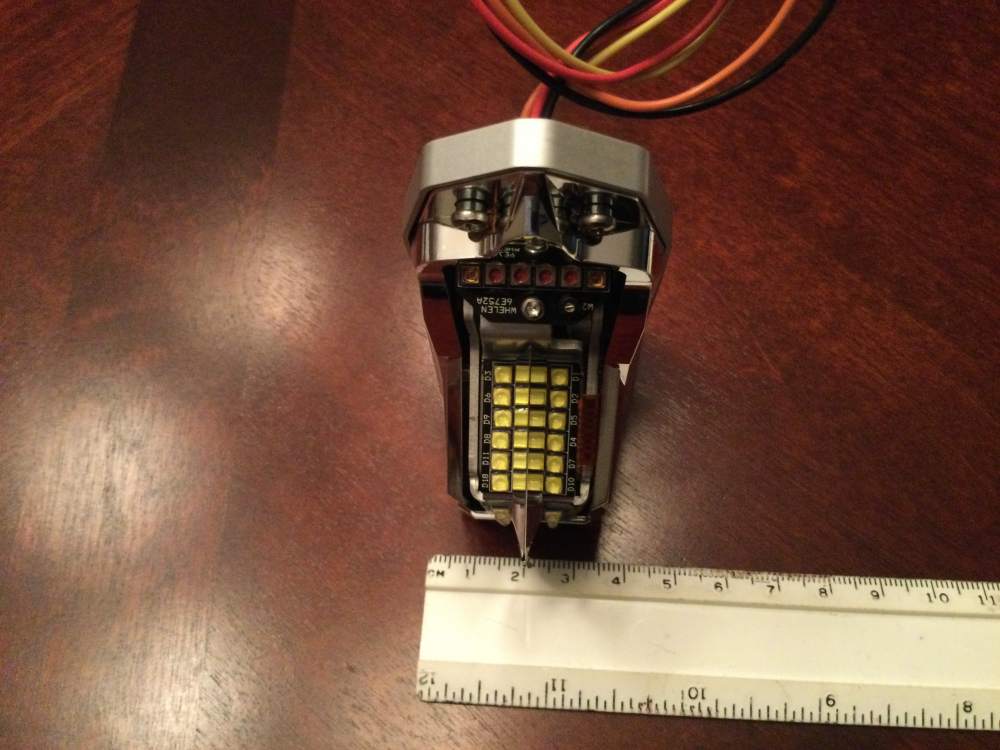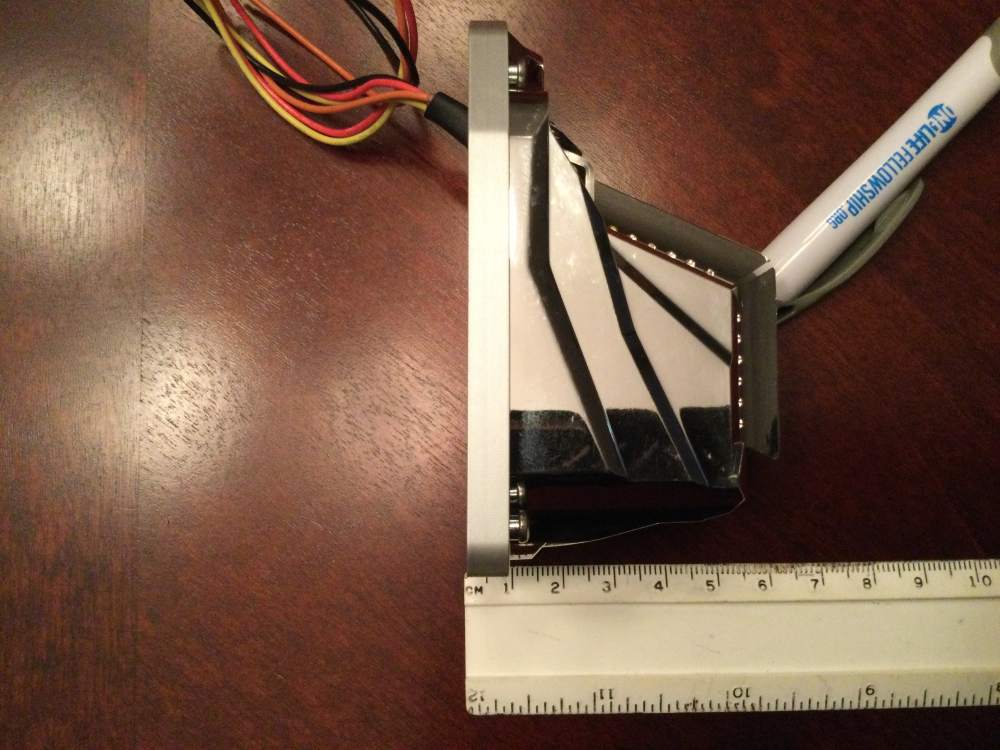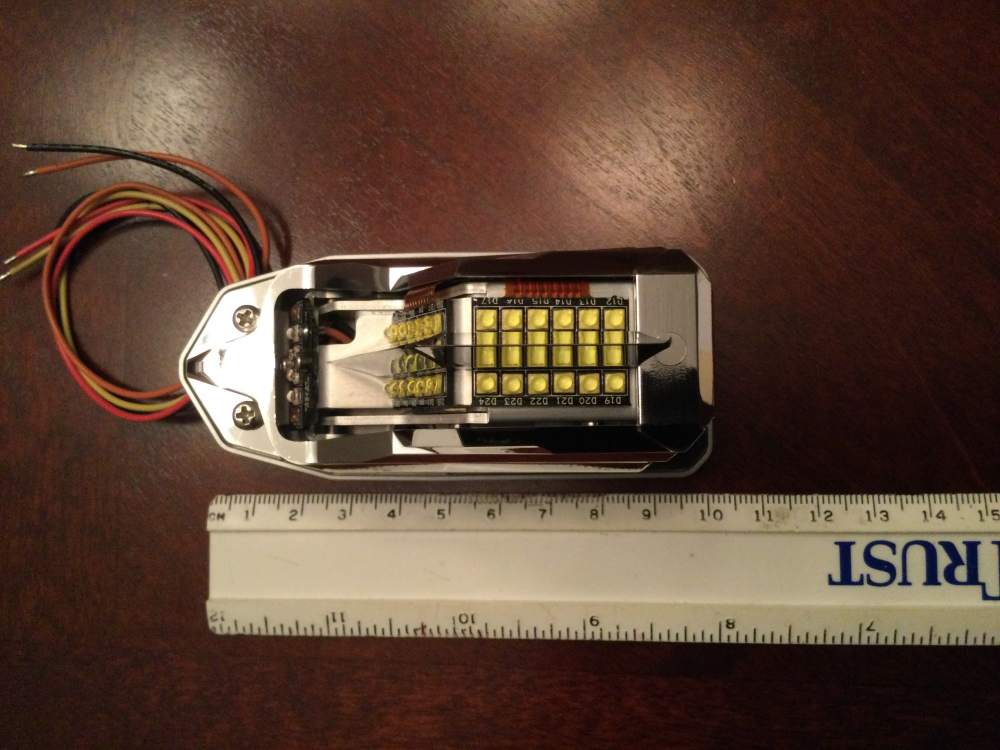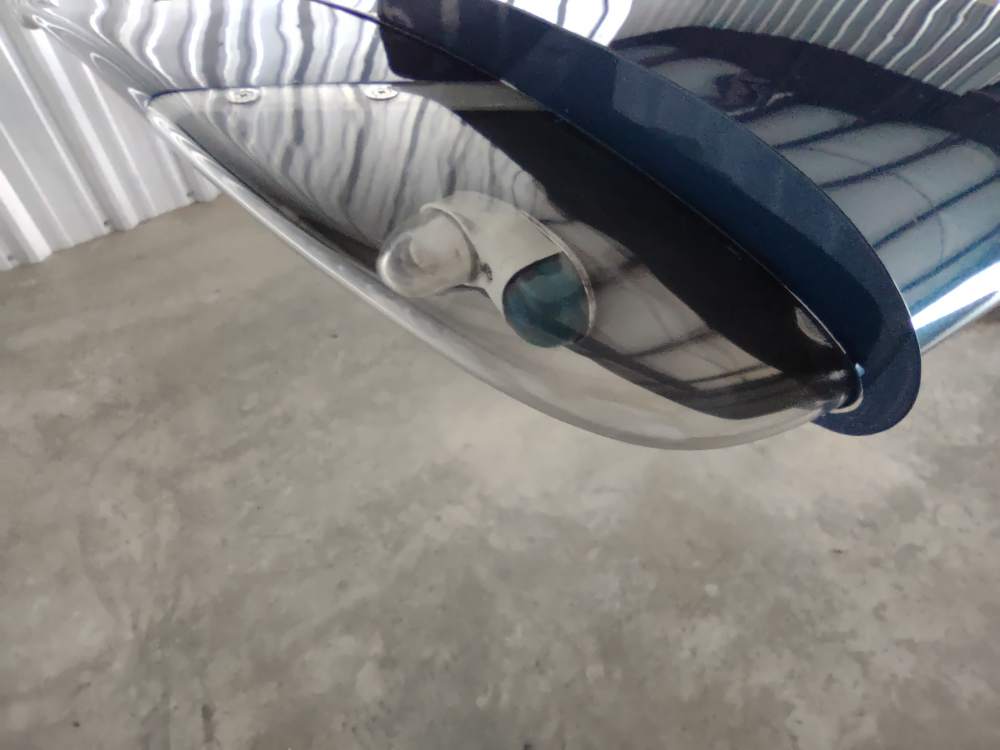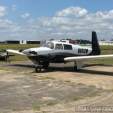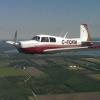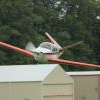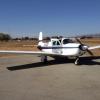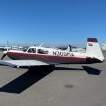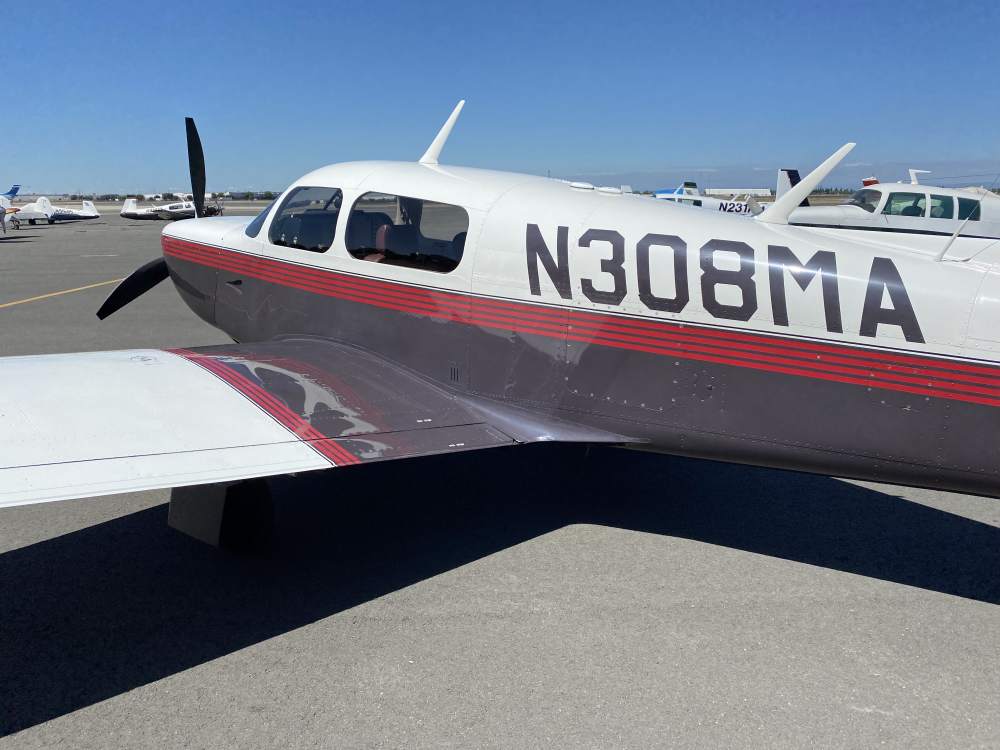Leaderboard
Popular Content
Showing content with the highest reputation on 06/16/2021 in all areas
-
Hello All, I've been a lurker here for a couple of years. Back in March traveled to Durango, CO to do a pre-buy on a '67 F model. I ended up purchasing the aircraft and have put 100 hours on it since then. I have a bit of a unique situation - I'm Canadian, live in Mexico City, and do business between the USA and Mexico. Because my life is so spread out, I wanted an aircraft that could carry a decent payload, make it from the US border to Mexico City non-stop, and be fun to fly to the beach. The M20F beat out everything else I was looking at on price, simplicity, and pure fun. After signing the paperwork in Durango, I flew to Sandpoint, Idaho to visit friends, followed by a trip to my US base in Portland, Oregon, and then down the coast to Los Angeles where I picked up my mother (who got me interested in flying as a kid) and flew to Mexico City via Bisbee, AZ, Alamos, Sonora (I highly recommend the pilot-owned Hacienda Los Alamos as it has a semi-private strip), Zacatecas, and finally Mexico City. In Los Angeles I got my first taste of flying in a Bravo and even flew in IMC over the top of LAX on the way to Whiteman. Heading south through Mexico we flew over the famous Copper Canyon, a complex of six canyons covering 25,000 square miles. At first I was concerned that there wouldn't be anywhere to set down in an emergency, however I was pleasantly surprised to discover more airstrips embedded into the hills than I could count! I wonder what they use them for... I'm now on the tail end of a two week round trip from Mexico City to Bellingham and back during which I've had the opportunity to land in the Alvord Desert Playa, a must do if you're passing through Southeastern Oregon. The last 100 hours hasn't been without its challenges; the oil probe at the back of the WOLF oil filter relocation kit came loose at some point before arriving in Bellingham and started leaking about a quart of oil per hour. Advanced Aircraft in Troutdale got me sorted pretty quickly. On my girlfriend's first flight, I didn't close the door properly and it ended coming open mid-flight. Luckily we convinced the door to behave and my girlfriend still wants to fly with me. I'm attaching some photos of my adventures and will hopefully get a chance to meet some of you here on the forum or at one of the Mooney meetups this summer!10 points
-
So the preliminary answer is in... Looks like the culprit was not one, but three sources. (1) Sniffle valve may have had a small bit of debris in it leading to a drip; (2) an engine hose had come loose (recall: this engine was just re-installed 12ish hours ago); and (3) a nut had come loose. Those three things addressed - no oil noticed in the ground test afterward. Knock on wood that clears things up for now! Thanks to M/S for the inputs here - they were helpful!!!4 points
-
For your viewing enjoyment… Video quality may have some funk… Shots inside the factory and in flight… -a-3 points
-
I gotta say, that just looks like oil from the breather tube. I don't know how the drains for the F's are arranged, but in the J the fuel pump overflow, intake manifold drain and crankcase breather are all bundled together out the left cowl flap. If there is oil dripping from the breather tube, with the right breeze, it drips on the tire. Likewise if there's any blue fuel dye on the end of the intake manifold drain, the oil can mix with it. I'd also point out that yellow oil + blue fuel dye = green crap.3 points
-
I’m getting a PMA450B. The killer feature that sold me is the ability to keep the copilot on the intercom with the pilot while turning off the radio audio to the copilot. Wife loves that idea. Skip3 points
-
A 3 inch instrument is too small IMHO to have useful SV. I've used it to great effect in larger displays.3 points
-
Based on all the discussions about how challenging it can be to get this engine to run LOP, I fully expected to go up, discover it ran rough LOP, and do a GAMI sweep to see how bad it was. I was shocked at how well it behaved. It runs well lean all the way from 60% power through 75% (at 75% the cylinders are getting a little warm - over 400). It has to be severely leaned to start to get rough. It supports LOP better than my TSIO-360-LB in a 231. I told @PilotX he was lucky and GAMI injectors wouldn't make a difference for him.2 points
-
First, methyl cellulose isn't all that cheap either, I use it for craft purposes. Second, this sounds like a perfectly awful idea. It is just brimming with potential unintended consequences that I'd not like to use on an airplane that could easily kill me if things aren't done right. Not a Chem E, but I minored in Chemistry in college back when the Earth was still cooling.2 points
-
If you get the Bravo to run smoothly at LOP at one power setting, with GAMIs, you'll be one of about three Bravo owners that I've heard of in the world that was able to make that work. If you run at settings where CHT is over 400 consistently, you have two choices: Budget for new cylinders every 500 hours or do whatever it takes to keep the hottest cylinder below 400 (open cowl flaps, add fuel, etc.). I try not to exceed 380. Lycoming printed a booklet for Bravo and Malibu Mirage owners that isn't part of the POH. At seminars and in the booklet they say do not run over 400 CHT and not over 1650 TIT. I don't remember the exact stats from the seminar, but they mentioned that for every ten degrees over 400 that you consistently run, it would shave so many hours from the cylinder life. The first TLS owners that ran at 400+ and 1750 TIT because the POH said you could were fortunate to get 250 hours from their first set of cylinders and 500 from their exhaust system. Then came the Bravo conversion. The oil cooled valve guides plus the conservative info from Lycoming allows many people to go TBO now with this engine. However people that still ran it at book speeds still go through cylinders and exhaust systems. The number one thing that can kill you with this airplane is the exhaust system. Inspect it closely, regularly. The welds give out. If the v-clamp that goes from the turbo to the tailpipe goes out it becomes a blow torch. There have been a few deaths documented from this happening, thus the 2 times re-torque limit on the v-clamp. If the previous owner flew it by the book expect cylinders and an exhaust system.2 points
-
2 points
-
If we're going to speculate, I can think of several reasons why four pilots of identical experience flying 50 hours apiece might be riskier than one pilot flying 200 hours. An obvious reason is the potential for miscommunication about the state of the airplane: fuel, squawks, required inspections, etc. Sure, these risks are mitigated by careful pre-flight inspections by each pilot, but we're talking about humans, not robots. All partnerships have at least some minor inefficiencies in communication, and some partnerships are quite sketchy in this respect. Next, since no pilot operates an aircraft exactly the same as another, the likelihood of an incident involving some gizmo being set to an unfamiliar mode by another pilot increases, especially in an airplane with fancy modern displays and navigators. Fuel totalizer again comes to mind, but could also be that one pilot de-selects the weather layer on a moving map, leading the next pilot to think the weather ahead is clear. Next, having a partnership airplane means a change in one pilot's plans due to weather, illness, etc, can adversely affect the plans of another partner - probably one they like and respect. That can increase get-there-itis pressure to negative ends. Finally, since we're dealing with humans, there are going to be cases where one partner commits some personal mistake they try to hide: minor overtemp or overboost of the engine, extending the gear or flaps above their limit speeds, etc.. At least some of those folks might have taken the airplane to the shop immediately as sole owner, but are inclined to let it ride to the next annual in a partnership. These are all reasons why some people would never consider being in a partnership. I don't think any of these risks are large, and I'm not saying they justify any particular increase in premium. But it's not unreasonable to think a multi-pilot partnership has an elevated risk profile vs. a single named insured, even when the average experience and total hours flown in the partnership is identical to that of the single owner.2 points
-
If your flying down from bellingham to mexico city, a couple places you should check out. Fields station. Right next to the lake bed you landed at. Literally like 4 or 5 minutes away. Its a popular spot where people land on the highway. CA66. a private but public airstrip on the beach next to santa cruz. Panoche Valley and Mercy hot springs. Mercy hot springs is charted. Panoche is not. (36°36'36.7"N 120°52'56.9"W) El Mirage lakebed. Cinder cone next to kern is another. Amboy, right off route 66. 3500 foot strip with the ability to drive off the runway and take a picture on route 66.2 points
-
It is maybe my poor understanding of English, so pardon me but aren't these 2 statements contradictory? On one hand you seem to point out a fundamental hardware problem and the risk of fixing it with software, and in the other hand you are confident in installing it in your aircraft although there are pending issues which are maybe addressed inadequately? PS: I highly esteem your contributions to this site, so, please do not take this comment in a negative way2 points
-
2 points
-
My Moms name and my wife’s Moms name were both Joyce. The C I had previously was named Joyce. After I hurt my shoulder and couldn’t handle the gear any longer I got this one, so we named her Re-Joyce. In our minds, Rejoice also enters the equation.2 points
-
Then I guess I don't understand how you land with different flap settings at the same speed. Since the aircraft stalls at different speeds based on flap setting you should fly faster 0 flap vs. full flap. In doing so you will touch down faster with 0 flaps. This is true for every aircraft, not just Mooneys.2 points
-
<Note to the gentle readers: epic rant follows. Don't espouse your "knowledge" based on a quick Google search. Some of your readers have real knowedge . . . . > Nitriding is case hardening by applying a hard outer layer of, for example, titanium nitride or aluminum nitride to the part in question. It's harder than a file (filing a nitrided part will clean it and make it shiny, but it also dulls the file very quickly). It may be 0.001" thick, sometimes even twice that if you ask for it to be done. Case hardening in a furnace is different, nothing is added to the steel. The part in question is heated up to change the phase of the steel and arrange the various atoms into a different structure. Controlled cooling is also required, lest the pesky atoms rearrange themselves back into the not-so-hard structure they had before. This won't work with low-carbon steel, there needs to be at least 0.5% carbon in it; traces of other elements will affect the temperatures required and the resulting hardness. Works great with many tool steels. At work, I harden various tool steels for wear resistance. Typical values are HRc=50-52, although some steels can reach 56-58 without becoming brittle (things like CPM9V get quite hard, much more so than H13, with greater wear resistance. But much more expensive to buy, more difficult to machine and require hotter temperature to harden). What kind of wear? It sits 1/8" away from a 1/4" hole through which molten fiberglass-reinforced nylon is injected at 600°F and 30,000 psi. After a half million cycles, there is wear that we can measure (almost 0.001" deep) and they are replaced. When making hardened parts, the piece is machined to size and often left 0.001-0.002" oversize, then heat treated, then cleaned up by grinding, high-speed milling or lathe turning with diamond tools. More reasons why hardened parts cost more. The only difference between case hardened and through-hardened parts is the time, trouble and expense to make a large part hard all the way through--depending on size, it can sit in the furnace for a long time near 2000°F, and cooling the center can be difficult. I have seen nitrided parts, almost 0.001" deep, run for decades without issue. This is common in industry for sliding parts. Quarter inch diameter pins that slide forwards and backwards two or three times a minute, twenty four hours a day, several million times, often several dozen at a time being pushed with 8-10 tons of pressure. Large pins, 2" in diameter, used to align two halves of a mold as it closes, twice a minute, with 40-50 tons pushing them when they engage. In over 30 years, I've seen guide pins break twice. Hundreds of molds, millions of cycles each, at five factories (one had 400 active molds, several dozen built in the late 80s, untold millions of cycles, still in production two years ago with the original nitrided guide pins and ejectors). Hardening is a complex subject, best done by someone experienced enough find and follow the steel mill's procedure. Sure, you can grind a piece of O-1 to an edge, hit it with your propane torch and dip it in some water, and it will be a functional cutter. But that ain't what we're talking here, and it ain't how cranks and cams are done . . . .1 point
-
I suppose I started (resurrected) this whole conversation most recently with my thread asking if it's a sin to buy a Cirrus. That conversation evolved into the realization that flying with your wheels hanging out is just ugly and awkward. And that the Bonanza was a better fit for my growing family. First transition training lesson has been done in the new 36 and I'm flat out thrilled. Not an ounce of doubt or regret in my purchase. The Cirrus didn't fit me that well being 6'2" or so. The Bonanza feels just right and way more stable in the bumps. I described it as built for a king. And with 1450 useful that is likely to increase when I redo the panel, it's the perfect family SUV. I flew my E for one of the last times today and honestly, I'm sad to see her go. It's an amazing 2 place airplane and incredibly economical. I'll always have a special place in my heart for the Mooney brand and my sweet 59Xray. Snce we're talking about 2nd planes, I already pointed out to my wife we have 2 planes this month. 2 hangars, 2 annuals.... I already floated the balloon that we need to keep the 2nd hangar and get a carbon cub to mess around with. She wasn't amused. But I'll keep working on her.1 point
-
1 point
-
1 point
-
10" is a great display -- but more expensive and you still have to keep one G5 as a backup. Once you get used to the tapes it is a non-issue. Even less of an issue on a larger display like the 10". I started on an Aspen with backup round gages. I eventually had to cover up the round gages to force myself to learn the tapes. Now, I hardly look at the round gages. It's a lot more money for the upgrade but you get a lot more panel and the option to add an integrated engine monitor. Needed - no. Cool - yes. Garmin is 5 months backorder on the 10" G3X so plan ahead.1 point
-
One is ~ $30 ounce (HPMC) and one is about $6 a pound. I asked specifically because methyl cellulose is relatively inert. I don't take Metamucil but I was not aware of any warnings on the packaging.1 point
-
I deleted it as I’m not sure my experience carries over here. ‘Our wing had about a 6 foot chord was I guess maybe 10” deep and each fuel tank was 114 gl, airplane held 228 gls of fuel. We had the spars removed, so of course the whole front of the wing was removed making access a whole lot easier. (old wings replacing spar caps) A few times when we had to fix leaks, it was on brand new wings and of course sealer that was only maybe a couple of weeks old Our experience was more of the tenacious snot like, gummy residue that smeared, clogged bristle brushes etc and was harder to remove than the straight B2. ‘Plus as much as possible we shot our wings together wet, and there was some concern that capillary attraction could be taking the stripper places we didn’t want it.1 point
-
1 point
-
My thought would be to NOT add all the weights in the tail and just keep some weight (Charlie or whatever) in the baggage area. Then on long trips you can pull those weights out and add in baggage.1 point
-
1 point
-
I wanted to pose the question to our community for those who have had either the PS Engineering PMA 7000B (with BT) or the 450B- or hopefully both for a better comparison. Nobody has to convince me that the 450B is better. I’ve done the research, it is unquestionably better. What I’m wondering is if the extra capability is worth the $900 price differential. EDIT: so basically, I can buy the 7000B for $1295 “because the airplane needs it”, but I need the wife’s consent for the $2195 PMA 450B. Currently, I’m very happy with my 35 year old KMA-24 and Sigtronics intercom. I certainly don’t need more capability, and I’m proudly a CB. Also, after rewiring the audio system, it’s an extremely “quiet” intercom and audio panel. But long-in-the-tooth is an understatement, and my KMA-24 is in for work right now. One upside to the 7000B is that it is pin-compatible with the KMA, so installation will be simpler to interface with my existing radios. The 450B has the fancy IntelliAudio, but I’m not sure if that’s worth the extra money. Both have BlueTooth, which would be nice but not really necessary. I noticed the 450 has a USB plug on the front. Any chance that’s Apple CarPlay compatible? Maybe for the PMA 450C, when it comes out... I should probably suggest that to @Mscheuer... Thanks in advance for the help.1 point
-
Well, I ended up buying the PMA8000G last year based on a late May 2020 conversation with.... PS Engineering, where they confirmed that the alerts were not available in the 450A at that time. The 200-450-0100 installation manual Rev 3 dated 10/2016 confirms this. The B version came out several months later, in August 2020. The PMA8000G with Flightmate came out in June 2020. Quoting a mistake doesn't harm anyone, it clarifies the issue. I installed a new 450A in a customer's Cirrus in late 2016, and I can confirm it had no Flightmate feature. There are a lot of people buying used avionics and it's important to differentiate features, sometimes upon serial number groups. The prior PMA8000B has two different installation manuals, based on the serial number range. Most people don't know that. There are different features even though the labels are the same to the average person. I love their products, install them for customers, and have swapped out several in my own plane to take advantage of their new features. I'm on my third PS Engineering audio panel in four years, in the same plane.1 point
-
Got my renewal quote today. 9% increase. Will just check the box and say fine... not worth getting other quotes. Yves1 point
-
Do not go with the straight Orion 650. While it will work, it is not the appropriate light for your embedded lights inside of your wing.1 point
-
Exactly, From most expensive to least cause, It could be anything from a cracked case to a oil filler tube O ring. Might I suggest a complete cleaning of the engine then use some magnaflux developer around the suspected areas based on your Mark I eyeball locater. Run the engine hard for a few minutes decowled, and the leak origination point will be obvious. CB's can use spray foot powder if they dont want to buy the proper stuff...1 point
-
When I observed this after a flight, it turned out to be a loose mag that had recently been installed by a well known MSC.1 point
-
There are several things it could be. That is what a leaking quick drain looks like when it is starting to fail, but there are other things, since oil tends to cling to a surface and run before it has to drip. Quick drain leak is clean oil.1 point
-
It’s very common to fix hardware deficiencies with software in modern systems where much if the behavior is under software control. It’s faster and less expensive and often more convenient for the customer since it’s usually easier to download a software patch than swap out hardware. I merely meant to point out that the approach is an indirect solution to a problem and requires careful consideration of all factors and thorough testing. We wish the products we pay so much money for, and bet our lives on, were perfect, but they are not. Look at how often Microsoft or Apple patch their software. So, once one accepts the fact that all products are imperfect to some extent, it becomes a matter of who do you trust to fix the problems once they are discovered. I just think that Garmin is likely to be able to maintain its products better than some other vendors. Skip1 point
-
Nice work Canamex! Congrats! There is a procedure for the open door thing around here somewhere… Most often, it lets itself be known at rotation… The next thing to be aware of… the baggage door can do the same thing…. So… get ready to update some old procedures with the new things you learn… I’m glad you are here. Best regards, -a-1 point
-
You might try filling it with fumed silica. It is pretty inert. look at the sds for the gel and see what they used.1 point
-
I know Bob was struggling with high oil temps after the Sabre cowl was fitted (don’t know whether it was truly correlated or just uncovered an air:oil cooling issue). Bob would definitely have gone by whatever the mfr recommended break in was, so it’s prob just coincidence, and I can say that Bob wouldn’t have put cam guard in during a break in. I don’t remember if he even overhauled the E or bought it recently overhauled. I was looking at the E (it was located in MD) at the same time as Bob and at least my criteria at the time was 200-500 hr engines.1 point
-
Took my Bravo for another test flight at 10500 with the exceptionally knowledgeable LOP guy @Warren and I told him I should have recorded our conversation because I would have to listen to it five times to understand what he said, guess I need to buy gas five more times. Taking the numbers posted elsewhere by @DVA I chose 22/28" for 65%. That gave me ROP - 22/28” 16.6gph (137KIAS) 65% LOP - 22/28” 11.8gph (110kias) 60% 22/30” 12.8 (125) 65% 22/32” 13.8 (132) 70% 22/34” 14.8 (137) 75% CHTs were a little over 400 but acceptable to me, TIT was also below 1650. I think I would probably do it all over again at 2400 for less vibration but this is what I have for now. Same speed at 2gph less.1 point
-
I opted not to do the SVT when I put a 275 in, but shortly after went to the Mooney PPP where we were flying in and around the mountains. Santa Fe itself is in a sort of basin and the approach from the east is either over mountains or through the valley the highway follows. It dawned on me that SVT that shows what you might run into might be worth while. For everyday flying where you are not below surrounding terrain it is just more clutter to the picture.1 point
-
The main benefit of good fuel gauges in an airplane with an accurate fuel totalizer system is to cover failure modes the totalizer can't "see". The obvious one is failure to program the totalizer correctly. Another is a bad or missing gas cap that allows fuel to be siphoned out of the tank in flight. Another that's applicable to Continental fuel injection is a leak in the fuel return system. It's fair to argue that even the old, original, "inaccurate" senders give you pretty good protection against these sorts of problems. But some people want better accuracy than those old senders can provide even when they're in good shape. Longevity is another selling point, though it's unclear to me whether the CIES senders are demonstrably better in that respect.1 point
-
Lycoming used to hold their dealership/vendors close. Aviall is one of the few vendors left. Omaha air parts used to be a lycoming dealer. They were recently purchased by Aircraft spruce. I would personally befriend an Engine shop and buy parts through the engine shop directly if you are still having issues. -Matt1 point
-
Here is the picture of the original M20M senders if it helps the community to pre-bend new CIES senders. I am still comparing sight gauges on the wing vs digital fuel readouts on the EIS. I understand that the CIES are calibrated for level flight and so when I taxi over to the fuel pit in a bit and put 20 gallons in I hope to see a commensurate increase in the digital readout.1 point
-
I did swipe pictures from MS and that got me the 98% solution. Add my lack of drilling/riveting ability and that brings down the final product but at least another 5%. I will tweak my baffles after a few more heat cycles. The CHT/EGT were so far very satisfactory, I need to drill down on #1 which is hotter than the rest and might be more a fuel issue than a baffling issue. Going to go fly and do a lean test with an experienced MSer.1 point
-
As a manufacturer getting anything done is done at the speed the ACO / MIDO moves, and as I’m no longer in manufacturing I can’t speak to that, but I am dealing with Orlando’s FSDO now and can tell you that things that used to be accomplished in a few minutes with an Appointment, now takes weeks. To get an application that you and the inspector signs, now goes like this, you fill it out and send a .pdf to the inspector, they take a few days to review it and send comments back, you change things, send another .pdf, they take a few days and then tell you the application is fine, and you start the process over on documentation of recency of experience, suitability fo FBO, access to AD’s etc, but each one at a time, not give me this list of items. A couple of back and forths with days in between and finally everything is done, so they will mail you the application and your supposed to do a zoom meeting with them so they can witness the signature, then you mail it back to them, they sign it and mail it back to you. This is all because if they come into the office, and allow appointments, they will catch Covid and die. So what used to take a few minutes in a face to face meeting, now takes weeks. What Mooney is going through is far more complicated, so just as a guess, things taking so long may not be their fault.1 point
-
Thanks. It’s kind of a strange explanation. Both surface mount and through hole components have tolerances and it should make no difference how the PCBs are manufactured. Having designed many such systems, I suspect that the worst case tolerance build up in some critical circuit was not adequately considered in the design. It’s a hardware problem that will get a software workaround because that’s a whole lot cheaper than redesigning and retrofitting the hardware. But, it’s tricky because a software “fix” for a hardware problem can introduce other issues since you are forced to address the symptom but not the root cause. The software patch has to be very thoroughly tested. There’s an old engineering axiom that goes: There is no such thing as a single change. I talked to my Garmin dealer about this yesterday and they didn’t know about it although they have installed many GFC 500s. Apparently Garmin doesn’t give its dealers a heads up about known issues unless they specifically run into a problem. Skip1 point
-
So this happened today! Working with @donkayefor instruction and some great help from @gsxrpilot to make sure this was a good Mooney for me. Can’t wait to get her back to Colorado and start some amazing adventures. Strike that…the adventure started months ago and hit warp speed over the past week. Thanks for all the indirect help Mooneyspace has been feeding me for the past 4 months. Looking forward to jumping in with both feet into one of my favorite planes! marc.1 point
-
How big is the order? Has it been getting larger or smaller? Industrial espionage can be fun.1 point
-
Shockingly, your premise does not hold up to scrutiny. The only thing you need to buy into is that the guy who was largely responsible for the formulation of Exxon Elite (Ed Kollin) thought he could improve upon his previous additive packages and/or have more freedom to formulate a superior additive blend (CamGaurd) without being encumbered by the policies of the marketing and accounting departments. I’m not beating up on corporations but sometimes good ideas don’t fit into the boxes created by corporate policy. Understanding this does not mean you think oil or engine manufacturers are stupid, it merely means that you understand that sometimes innovation doesn’t thrive under corporate policy. Do you think Ed should have dropped his mic and walked off stage after Exxon Elite? No chance he could do any better? Or is it just that he went out on his own that discredits his work on camguard?1 point
-
Hi Ventus, Sorry for the delay. Pics of rear seat removal below. There is a small pin on the outer side of each seat. Pulling the pin releases the the seat back and the seat belt on the fuselage side of the seat back. The seat can then be tilted out of the center anchor (also male to female but without the spring loaded pin. Good luck! R1 point
-
I have spent a number of years conducting and reviewing major accident investigations not in the aviation industry so I don’t profess any expertise or interest in investigation this. I will give my opinion that the attitude I was just reading from one responder that “shit happens let’s move on” will lead you no where in terms of preventing reoccurrence. Saying that wing vortices caused this is not the root cause.1 point



